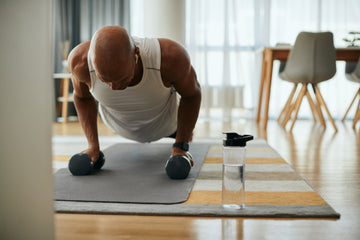When it comes to building strength, muscle, and burning calories efficiently, few training methods compare to compound lifting. Compound lifts are exercises that work multiple muscle groups at the same time, such as squats, deadlifts, bench presses, and pull-ups. Unlike isolation movements that target a single muscle, compound lifts engage several major muscle groups and joints, making them ideal for anyone who wants to maximize results in less time.
One of the main benefits of compound lifting is efficiency. For example, a barbell squat activates the quads, hamstrings, glutes, lower back, and core all at once. A bench press recruits the chest, shoulders, and triceps, while a deadlift involves the legs, back, grip, and core. Because these lifts use large muscle groups together, they burn more calories, increase overall strength faster, and stimulate the release of growth hormones that aid in muscle development.
For fat loss, compound lifts are particularly powerful. Heavy, full-body movements raise your heart rate and increase energy expenditure, creating a significant calorie burn both during and after the workout. This “afterburn effect,” also known as excess post-exercise oxygen consumption (EPOC), means your body continues burning calories long after the session is finished. When paired with proper nutrition, compound lifting becomes a cornerstone of sustainable weight loss.
Beginners should start with foundational movements: squats, deadlifts, bench press, overhead press, rows, and pull-ups. Mastering form is critical to avoid injury and ensure long-term progress, so start with lighter weights and gradually increase the load. A simple program built around three to four compound lifts per workout can be more effective than spending hours on isolated machine exercises.
Compound lifting also improves functional strength, meaning it carries over into real-life activities like lifting, carrying, or climbing. This makes it not only valuable for athletes but also for everyday fitness enthusiasts who want to feel stronger and more capable outside the gym.
To get the best results, focus on progressive overload, gradually increasing the weight, reps, or sets over time. Combine compound lifts with adequate recovery, balanced nutrition, and optional accessory exercises for smaller muscle groups. With consistency, compound lifting builds a strong, balanced body while helping shed excess fat and boosting overall fitness.
In short, compound lifts are the foundation of effective strength training. They save time, build muscle, torch calories, and enhance functional performance. Whether your goal is to gain strength, lose weight, or simply train smarter, making compound lifting the core of your routine will deliver results that isolation exercises alone cannot match.






